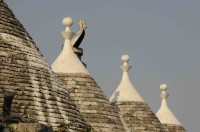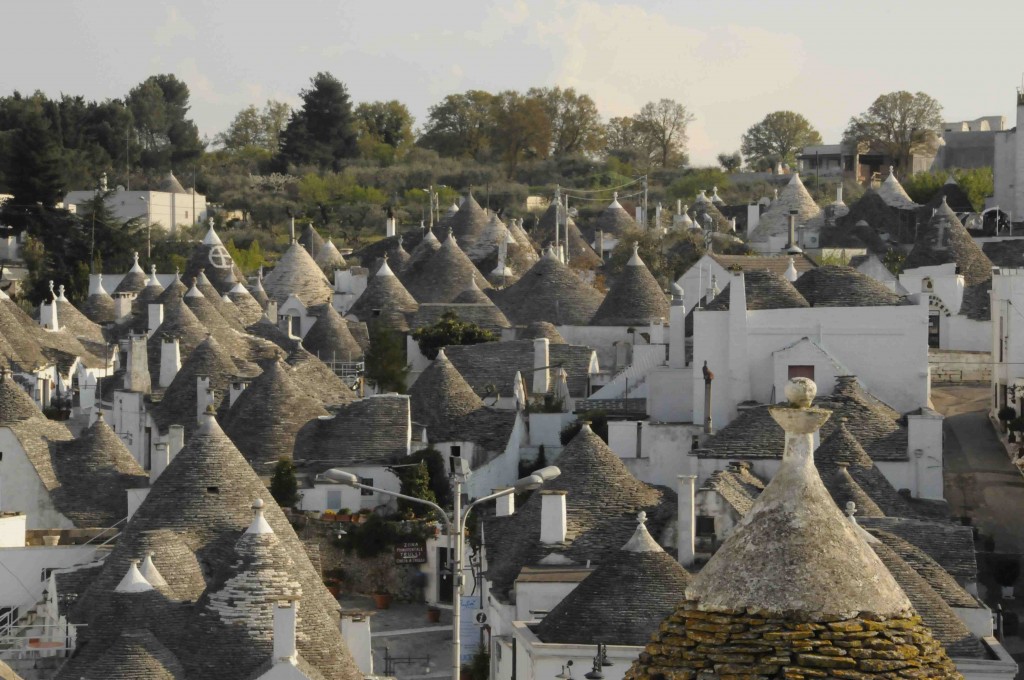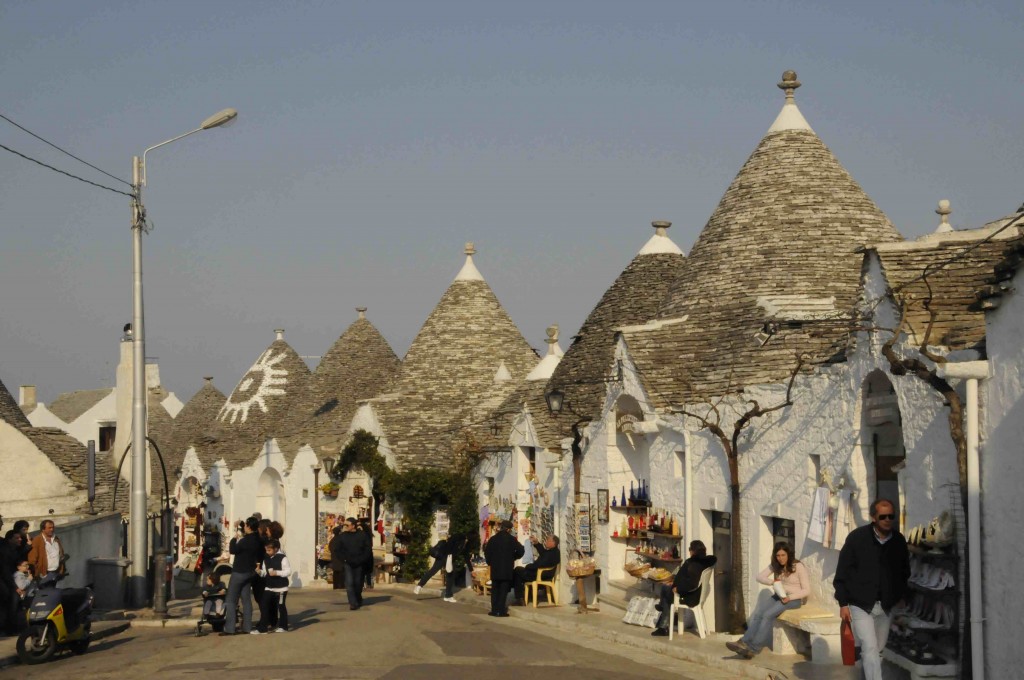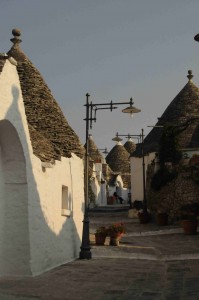Icons of the Puglia region of Italy, the conical huts known as trulli, poke out everywhere in the region, but nowhere are they as numerous as in the city of Alberobello. Demonstrating an architectural sense from another time (which sometimes seems  like it comes from another world), trulli are made of hundreds of carefully placed stones. On top of their cone-shaped roofs are knob-like Pinnacoli, aka pinnacles. Alberobello is a great place for families who are traveling, and the city has more than 1500 trulli. The now world-famous city is one of Puglia’s most important tourist destinations. Everyone from celebrities to politicians has been buying up renovated trulli in the recent years.
like it comes from another world), trulli are made of hundreds of carefully placed stones. On top of their cone-shaped roofs are knob-like Pinnacoli, aka pinnacles. Alberobello is a great place for families who are traveling, and the city has more than 1500 trulli. The now world-famous city is one of Puglia’s most important tourist destinations. Everyone from celebrities to politicians has been buying up renovated trulli in the recent years.
I t isn’t difficult to find trulli in Puglia, and any train ride in the region will take you past one or more. It is truly astounding to think that so many ancient buildings still dot the countryside. Sadly, in areas other than Alberobello, many trulli have fallen into disrepair. The difference between most of the trulli seen from trains and those found in Alberobello is that those in Alberobello are better cared for, are white washed, and have roofs adorned with the ancient symbols of their pagan inhabitants. The compromise you make is sharing them with hundreds of other travelers.
t isn’t difficult to find trulli in Puglia, and any train ride in the region will take you past one or more. It is truly astounding to think that so many ancient buildings still dot the countryside. Sadly, in areas other than Alberobello, many trulli have fallen into disrepair. The difference between most of the trulli seen from trains and those found in Alberobello is that those in Alberobello are better cared for, are white washed, and have roofs adorned with the ancient symbols of their pagan inhabitants. The compromise you make is sharing them with hundreds of other travelers.
 The history of the trullo-style architecture is at least half hearsay, but the earliest examples of trulli come from Greece during the Bronze Age. The Greeks controlled the lower portion of Italy for centuries and their presence is still felt in many ways, for example, some of the dialects in the Puglia region recorded around the turn of the 20th Century still contained many Greek words.
The history of the trullo-style architecture is at least half hearsay, but the earliest examples of trulli come from Greece during the Bronze Age. The Greeks controlled the lower portion of Italy for centuries and their presence is still felt in many ways, for example, some of the dialects in the Puglia region recorded around the turn of the 20th Century still contained many Greek words.
One of the more interesting stories that I’ve heard concerning the origin of the trulli is probably not true, however it’s worth mentioning. Back way before Italy was united, each region of Italy had it’s own lords who were subservient to more powerful kings in Naples or Florence. Supposedly, Puglia’s lords were crafty guys because they forced their subjects to live in trulli to evade taxes: when the king’s tax collectors came to collect property tax, the peasants were told to quickly dismantle their stone homes, thus saving their lords a few bucks. While comical, I have never heard this story officially validated. What is known about the original inhabitants is that they likely worshiped the sun because most of the homes’ entrances face east.
 When visiting Alberobello there’s no better way to see the city than by strolling around Rione Monti. The twisting and turning streets are lined with trulli, many of which can be rented for a night or more. These rentals include kitchens and bedrooms. In summer, it is best to secure reservations in advance, but trulli can easily be rented without reservations during the months of October-April.
When visiting Alberobello there’s no better way to see the city than by strolling around Rione Monti. The twisting and turning streets are lined with trulli, many of which can be rented for a night or more. These rentals include kitchens and bedrooms. In summer, it is best to secure reservations in advance, but trulli can easily be rented without reservations during the months of October-April.
The streets are also filled with wine shops, artisanal shops, and shops selling all manner of souvenirs. Giuseppe Maffei is one local artisan famed for his miniature, ceramic trulli. When visiting Alberobello, don’t miss the Chiesa Sant’Antonio: a giant trullo church.
Getting to Alberobello can be a pain if you don’t have a car and you don’t plan on spending the night. It is best to be based out of either Taranto or Bari, where the travel time is around 1 ½ hours by train or bus. Buses and trains run much more regularly during the summer months. Check out the Trenitalia Web site or the FSE Bus Web site.
LOOKING MORE….


Comments